When it comes to choosing a halter for your horse, there are many different options available. But how do you choose which one is right for you?
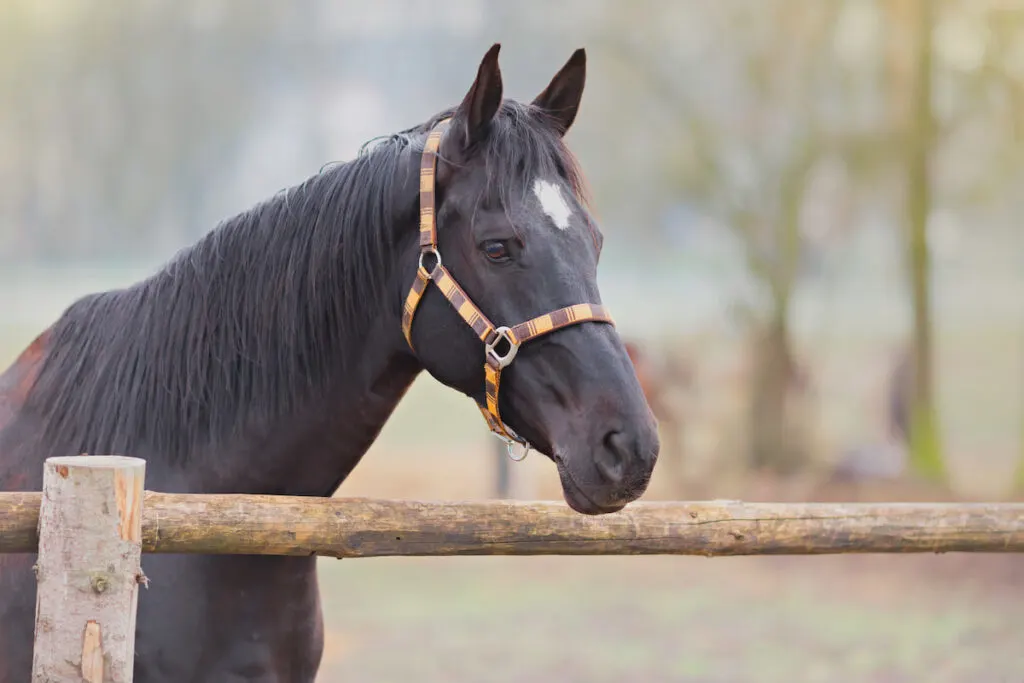
Don’t worry – it might seem overwhelming at first, but halters are a relatively low-risk, low-price piece of horse equipment. If one style isn’t working for you, try another!
However, you want to be sure that your halter fits your horse correctly, and that it keeps him safe and under control. If you’re trying to decide which halter is right for you, check out our handy halter guide!
Before you buy…
Before we get into the details, let’s talk about safety and comfort, for both you and your horse.
Training
No special fancy halter can replace good training. If your horse is not already halter trained, take the time to properly get him accustomed to halter pressure.
If you are unsure of how to do this safely and correctly, always consult a professional. Trying to force a horse to do what you want by using a more severe halter can result in injuries to either you or your horse.
Fit
Your horse’s halter should generally fit “like a glove.” If it doesn’t fit properly, it can cause discomfort and pain, or it just won’t work the way it’s supposed to.
A horse with an ill-fitting halter can often find a way out of it – and often at the worst times!
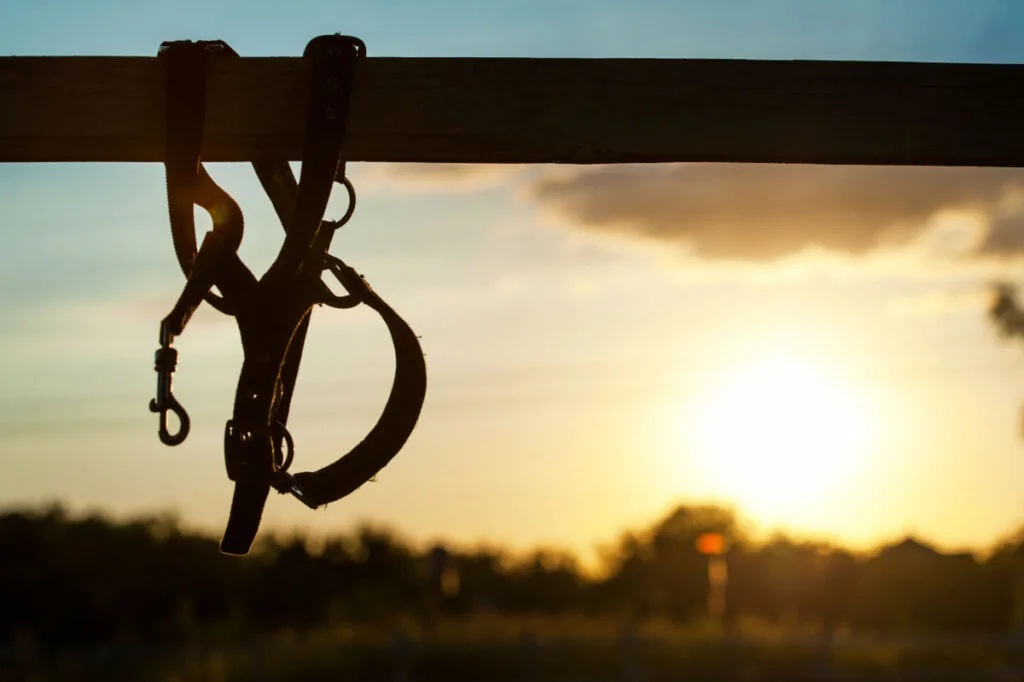
Check to make sure that your halter’s noseband is not too low. This can cause constriction of your horse’s airway, and cause him to panic (or worse). The noseband should sit about two finger-widths below the cheekbone.
A halter that is too big can slip and damage your horse’s eyes, get caught on things, and it can even come off. A halter that is too small will pinch and rub your horse and can cause permanent scars and even bone damage.
Halter Materials
There is a wide variety of different materials and styles when it comes to halters. Let’s take a look at some halter options to figure out what might work best for your horse.
Leather
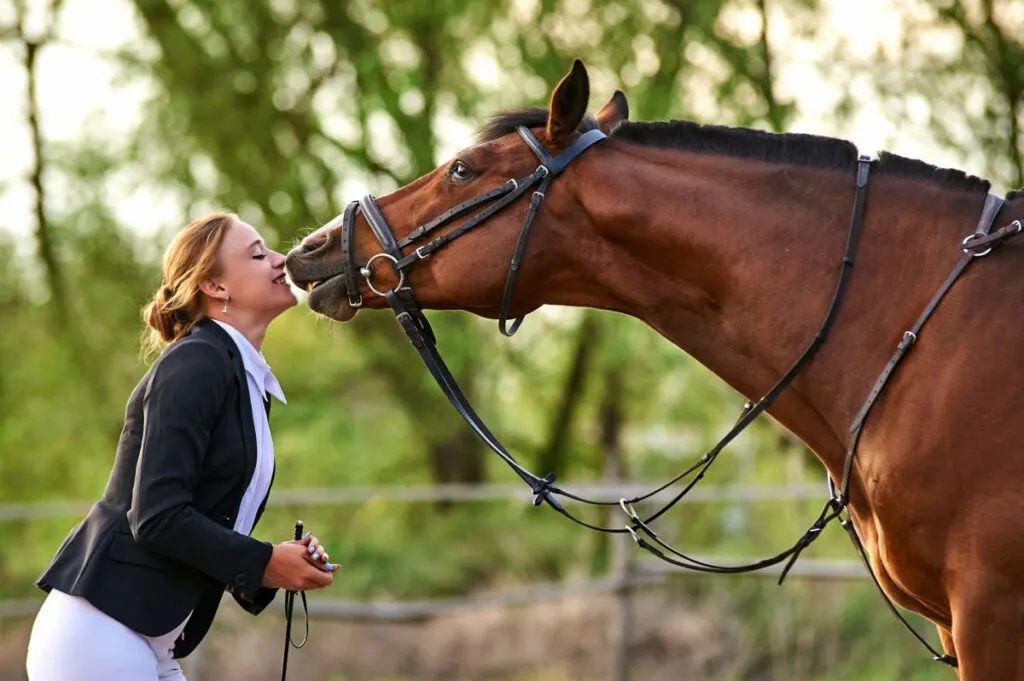
Always a classy choice, leather halters are durable and attractive. They come in a wide variety of styles, from decorative leather show halters to rugged outdoor paddock halters.
Some leather halters have padded nosebands or pretty rolled throat latches, and many offer a lot of size adjustability as well. If you take care of a leather halter by cleaning it and conditioning it as you would your other leather tack, they can last a long time.
Not all leather is created equally, though. When shopping for a leather halter, check the quality of the materials.
A nice halter made of English bridle leather with extra stitching along the cheekpieces may cost you more than a plain cowhide halter. The trade off is that it’s more attractive for the show or sale ring, and if taken care of, will hold up better over time.
Brittle, dry leather can crack and become a hazard for your horse. Leather is more likely to break than nylon or rope, which can actually be a good safety feature for a horse who must wear a halter in the paddock or when trailering.
However, you don’t generally want your halter to break unexpectedly if it’s not an emergency. Regularly check your halter for cracks or signs of breakage, especially if you choose an inexpensive version or find one secondhand. (source)
Pros of Leather Halters
- Attractive
- Durable
- Adjustable
- Safer for constant use
Cons of Leather Halters
- Can be more expensive
- May not last as long as nylon
Synthetic Materials
- 1 inch wide, double-ply nylon construction
- Features a sewn-in throat snap hook for easy on and off
- Brass plated hardware
- Heat-sealed oblong buckle holes
Nylon or polypropylene webbing is a common halter choice. These halters come in every color under the sun, and range in thickness (or ply) with varying degrees of durability.
Thicker webbed halters have a higher ply – that is, they’re comprised of more layers of fabric. These double- and triple-ply halters will be more durable, last longer, and will retain their shape better. A halter that keeps its shape is easier to fit over your horse’s head, which is an important feature in a tack item that’s used every day.
Thin, flimsy halters may be inexpensive – but can be frustrating to use. Single-ply polypropylene webbing is likely to break under stress, which is good if your horse is tangled in a fence. It’s not so good if you’re at a show, and he decides he’d rather not be tied to a trailer.
While you don’t have to care for a synthetic halter in the same way you would a leather halter, always make sure that the edges aren’t fraying or wearing thin. These halters usually have hardware such as buckles or grommets, so make sure those are in good condition as well. (source)
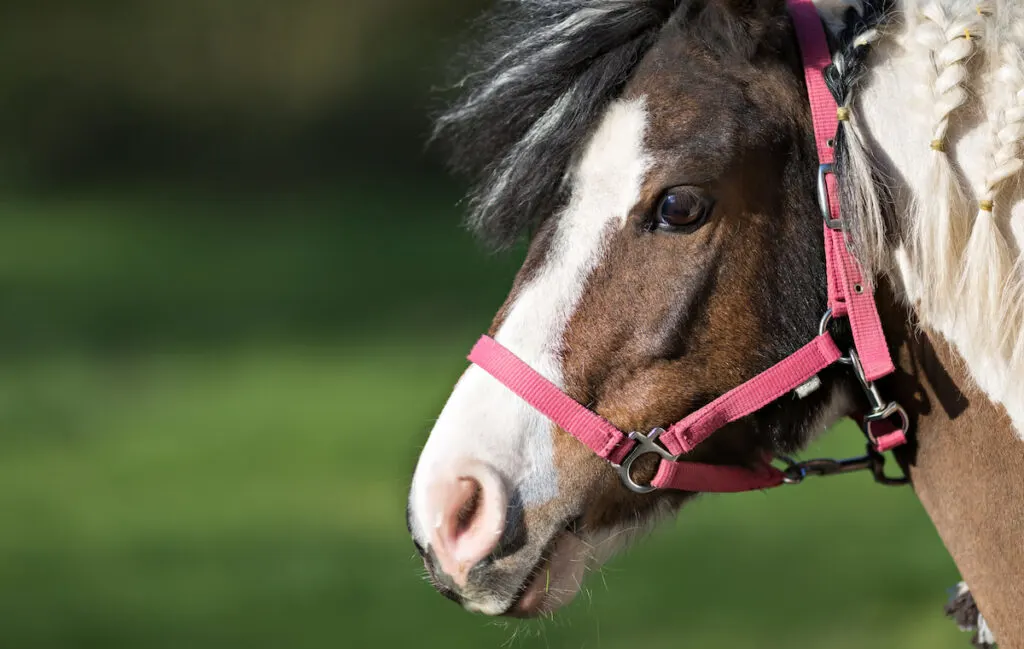
Pros of Synthetic Halters
- Stylish
- Inexpensive
- Durable
- Many varieties
Cons of Synthetic Halters
- Poor quality halters may break easily
Rope
- NATURAL HORSEMANSHIP – Our Natural Horsemanship rope halter is one of the key tools you need to effectively work your horse from the ground
- SUPERIOR – Crafted from the highest quality polyester braided rope that is soft, responsive, strong, weather and wear resistant
- DURABLE – It will stay truer to its original form for longer without fading, stretching, weakening or breaking
Rope halters can be made of natural materials (such as cotton) or synthetic (such as polypropylene). Rope halters have been rising in popularity in the English riding world, although Western ranchers have been using them for decades.
Rope halters are made from a single length of rope, strategically knotted to take the shape of a halter. You can purchase halters that are already knotted, buy a kit and make your own, or take some rope and figure it out for yourself. I recommend buying one that’s already made, if you’re not yet experienced with using them.
Thin rope halters can apply more pressure to a horse’s sensitive areas, which can be useful for hard-to-handle animals. Alternatively, a thicker rope halter can be used for a horse who’s easy to lead, or too sensitive for a thinner version.
While these halters are fully adjustable and can fit your horse’s head like a glove – they also don’t break. Because of this, they’re generally not safe to use while your horse is turned out, and they can’t be used on crossties or in a trailer either.
Rope halters have a little bit more of a learning curve to them, and you may find that your horse responds well to them, or that he won’t tolerate them at all. They can be great for training, but can stress your horse if used improperly. Pay attention to your horse’s cues and try to find a halter that suits both of your needs.
Pros of Rope Halters
- No metal fittings
- Durable
- Adjustable
- Won’t break
Cons of Rope Halters
- Can be difficult to use properly
- May be too harsh
Other Halter Options
If you’re still not satisfied with any of the basic halter designs, there are extra features available that can change the halter’s function (and cost). The more accessories and bells and whistles a halter has, the more expensive it’s likely to be – but you may get more use out of it, too.
Flat vs. Rolled Design
Made of folded leather or synthetic materials, flat halters lie flat against the horse’s face. The wider the halter’s surface area, the less direct pressure they place on specific points of a horse’s face. A wide padded noseband will provide less pressure than a thin rolled rope.
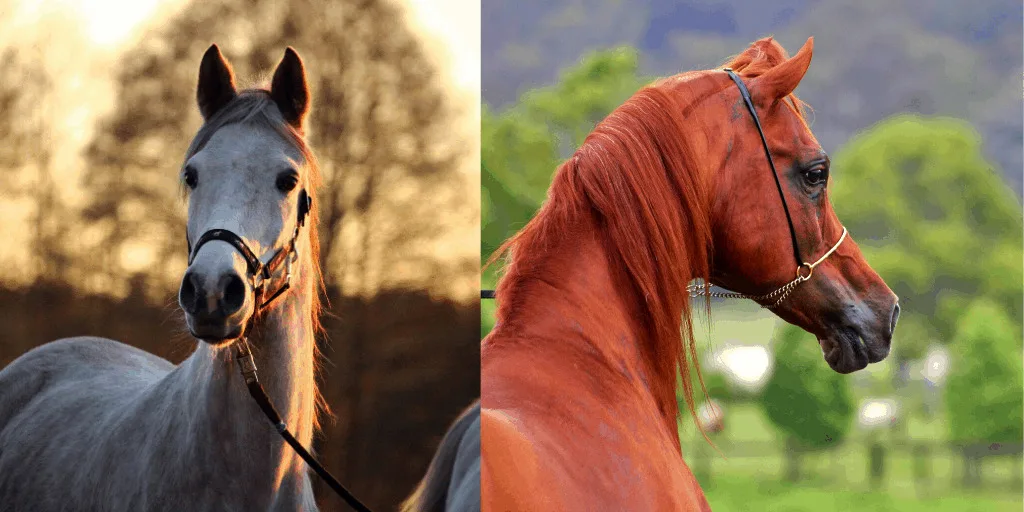
Rolled halters (usually made of rope, but sometimes of leather) are thinner. They can place a large amount of pressure on a horse’s face, which is useful for horses that need a firmer hand. However, too much pressure can cause a horse to panic, so make sure that your horse is comfortable with a thinner rolled halter.
Breakaway Crown
- Premium nylon material
- Burgundy latigo leather breakaway crown
- Box stitched stress points for added strength
- Heavy-duty brass hardware
Many synthetic halters feature a leather strap on the crown piece. While a thick nylon halter won’t break under pressure, the leather crown piece will give way – freeing the horse’s head in an emergency.
You know your horse best. If he’s likely to break his halter on purpose and he doesn’t need to wear a halter when he’s turned out – you may want to rethink a breakaway crown. But, if he’s mild-mannered and must wear his halter at all times, he’s much safer if he can free himself in an emergency.
Jowl Clips or Side Clips
Most flat leather and synthetic halters feature metal pieces, which are handy for attaching things like lead ropes, crossties, or trailer ties. A single ring under the horse’s jaw gives a handler good control with only a lead rope, and jowl clips are handy for using with crossties.
If you’re constantly clipping and unclipping your horse to various leads, jowl clips are pretty handy. However, if your horse is only using his halter while attached to a single lead rope, a nice rope halter (without any hardware) may do the trick.
Adjustable Buckles
Many basic halters are not adjustable – one size fits all. However, many feature extra buckles at the crown or below the noseband, which can help you get a good fit.
It’s easier to punch extra holes in a leather halter, so be careful when sizing one made of synthetic materials. Also, if the halter’s holes are reinforced with metal grommets, it’ll likely be more durable (and probably more expensive).
Specialty Halters
Sometimes, a plain halter just doesn’t do the trick. Here are some specialty halters to consider adding to your collection.
Padded Halter
Some halters have extra padding for a horse’s sensitive areas, such as the nose and poll. This padding can be built into the halter itself, or you can purchase pads to fit over an existing halter.
Padding is great for sensitive horses, and it can also be used while trailering. Horses can develop sores from unpadded halters, as they tend to lean onto their faces when riding in a trailer.
Keep in mind that fleece accessories are very soft, but can get hot in the summertime or hotter climates. They’re also harder to keep clean!
Grooming Halter
These simple halters usually just consist of a noseband attached to a crownpiece. This provides easy access to your horse’s face during grooming or bathing, but doesn’t offer much control.
Shipping Halter
These halters are comfortable, and lined with padding all over to prevent rubs. If you don’t travel much, you may just want to consider some fleece accessories to fit over your regular halter.
Decorative Show Halter
Depending on your discipline, you may want to add a fancy show halter to your collection. These halters are often thinner, and used exclusively for showing.
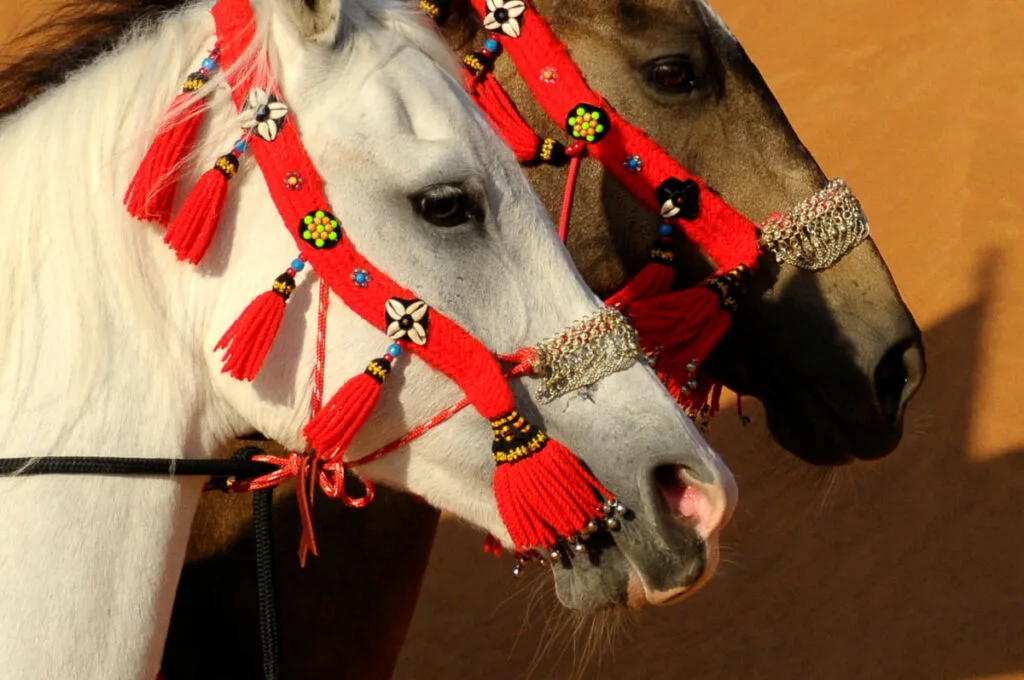
They’re designed to show off your horse’s best assets, rather than hold up on the crossties. Gems, silver, gold, or engravings can add some flair in the show ring – and can also burn some holes in your wallet.
Combination Halter/Bridle
These are handy for trail riders who need a quick way to safely switch from a bridle to a halter. Adjustable straps hold the bit in place, and it can be easily released when a day of riding is over.
Training Halter
You can train your horse using any halter, but training halters are specifically designed to place pressure on specific points. When the horse braces against the halter, he receives pressure that encourages him to stop. When he relaxes, the pressure is relieved.
Hybrid Halters
If you still can’t decide which halter to buy, consider a hybrid halter. These come in many different varieties and styles, depending on your needs. Some examples of hybrid halters are:
- Flat nylon halter featuring a knotted rope noseband. Gives extra pressure to the nose area for extra control, but features side hardware for clips.
- Flat leather halter featuring a knotted rope noseband and throat-piece. Useful for training, adjustable, and has clips!
- Flat halter with rope throat-piece. This is handy if you need extra room because your horse has a large head.
- Heavy-duty restraint halters with chains. These should only be used for specific circumstances and are usually used on cows. Use with caution.
Remember though, no gadget or fancy halter can replace real, honest-to-goodness time and training. Make sure that your horse understands what you’re asking of him, and consult a professional if you’re unsure. Happy halter shopping!


